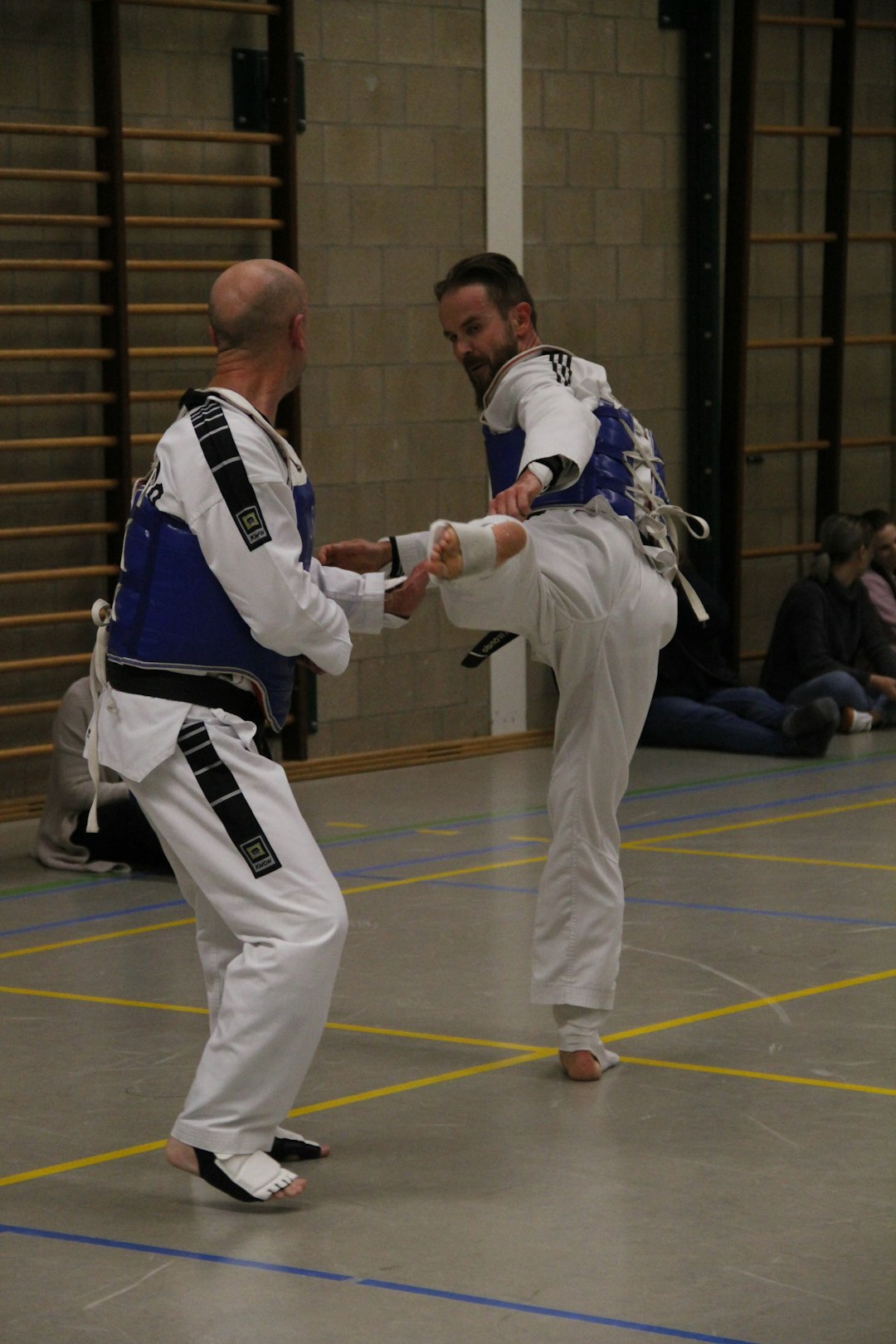When training karate at home or in a dojo, the traditional gi is not just a uniform but a symbol of respect and an integral part of the practice, offering both functional benefits for movement and a connection to karate's traditions. The gi, consisting of a jacket, trousers, and belt, is typically made from robust, yet comfortable cotton or hemp fabric, designed to facilitate unhindered performance of karate techniques while supporting dynamic movements like blocks, strikes, kicks, and throws. Its simple design, with white socks or bare legs, emphasizes effectiveness over elaborate design. The uniform's standardization across practitioners fosters a sense of unity within the karate community, with the belt's color reflecting the practitioner's level of skill. For home training, beginners usually start with a white belt, which symbolizes their foundational stage. It's also crucial to select a gi that fits well for optimal performance, with considerations for fabric weight and breathability. Proper care of the gi, including rinsing in cold water post-training, gentle machine washing without bleach or softeners, and air drying away from sunlight, will maintain its appearance and functionality over time. Personalizing your gi through customizations like embroidery or patches allows for individual expression while maintaining the karate tradition's essence. In summary, the gi is a key element in karate practice, both for its cultural significance and its practical use, and should be chosen with care to ensure a respectful and effective training experience whether at home or in a dojo.
Explore the traditional attire of martial artists with our deep dive into the karate uniform, commonly known as the Gi. This article unravels the significance of the Gi in the practice of karate, offering insights into its purpose, composition, and the nuances that distinguish a mere garment from one that’s an integral part of a martial artist’s training regimen, especially when train karate home. From selecting the perfect Gi for your home practice to maintaining its integrity through proper care, learn how to honor this essential component of the karate discipline. Additionally, discover how personalization can elevate your training experience, making your home practice as authentic and empowering as possible.
- Understanding the Karate Uniform: The Gi's Purpose and Composition
- Key Features of the Karate Gi: Fabric, Fit, and Functionality for Home Training
- How to Select a Karate Gi for Home Practice: Tips for Beginners and Experienced Practitioners Alike
- Proper Care and Maintenance of Your Karate Gi to Ensure Long-Term Durability
- Customizing Your Karate Gi: Personalization Options for Train Karate Home Enthusiasts
Understanding the Karate Uniform: The Gi's Purpose and Composition

When practicing karate at home or in a dojo, donning the appropriate attire is essential to the training experience. The karate uniform, commonly known as a gi, serves a dual purpose: it provides the wearer with a standardized outfit that allows for ease of movement during practice, while also signifying respect for the martial art’s traditions and discipline. The gi typically consists of a jacket, trousers, and a belt, which together create a simple yet functional garment. Made from heavy cotton or hemp fabric, the gi is designed to be both durable and comfortable, allowing practitioners to execute techniques without restriction. Its loose fit accommodates a range of movements required in karate, from blocks and strikes to kicks and throws. The jacket, with its open left side, and the trousers, which tuck into white socks or bare legs during practice, are designed to be practical and unobtrusive.
The composition of a karate gi is standardized to ensure that all practitioners, regardless of their skill level or where they train karate at home or in a dojo, wear the same attire. This uniformity reinforces the sense of community and shared discipline within the martial arts community. The fabric’s weight varies depending on the style of karate being practiced, with Shotokan karate often requiring a heavier gi than styles like Goju-Ryu or Wushu. Additionally, the belt, or obi, which ties at the waist, indicates the wearer’s rank within the martial art. As a beginner training karate at home, one typically starts with a white belt, signifying an initial stage of proficiency. Over time, as skills and knowledge advance, so too does the color and symbolism of the belt, reflecting the practitioner’s growth and dedication to the art.
Key Features of the Karate Gi: Fabric, Fit, and Functionality for Home Training
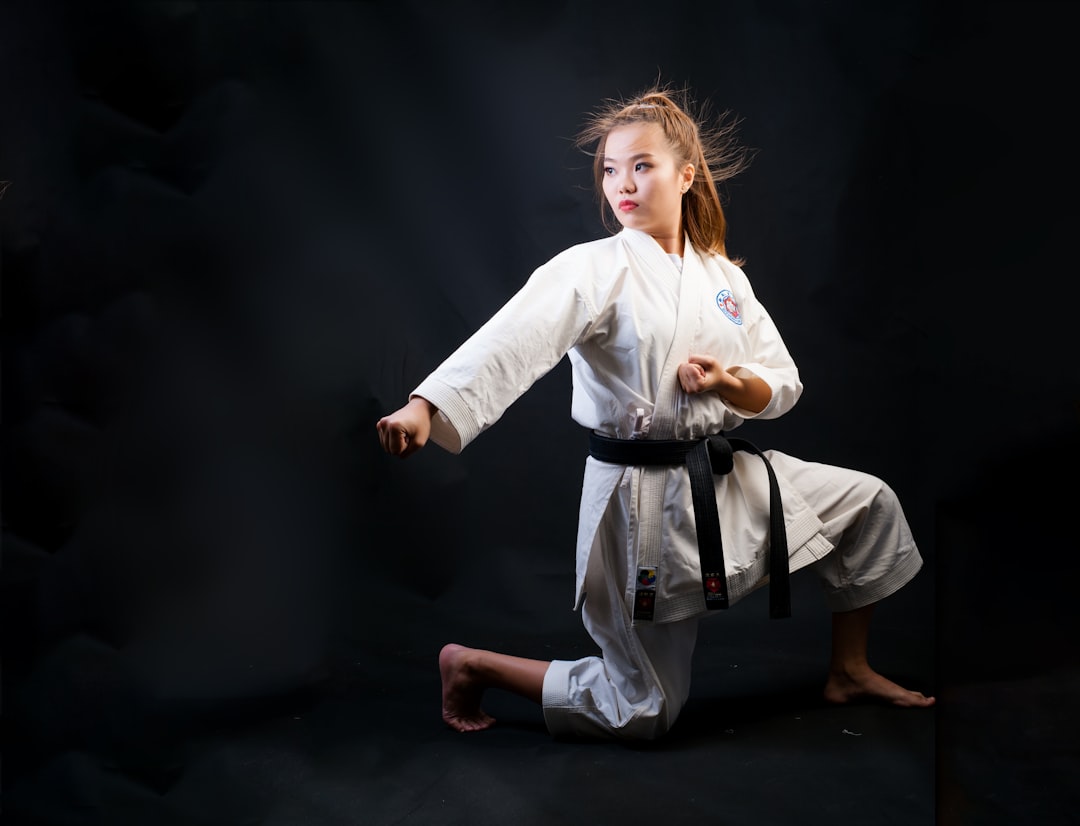
When practicing karate at home, having the right attire is crucial to ensure comfort, mobility, and adherence to traditional techniques. The Karate Gi, a staple in martial arts training, is designed with key features that make it ideal for both practice and competition. The fabric of a Karate Gi typically consists of a heavyweight weave, often made from cotton or a blend that allows for optimal ventilation while providing durability for repeated movements and techniques. Does the fabric of a Karate Gi impact training at home? Absolutely, as the right fabric balance comfort with resilience, ensuring that the wearer’s movements are not hindered during practice.
The fit of a Karate Gi is tailored to provide a snug yet unrestricted silhouette. It should be neither too tight nor too loose; this allows for ease of movement and enables practitioners to execute karate moves effectively without the risk of fabric catching on objects or causing discomfort. Additionally, the functionality of a Karate Gi extends beyond its aesthetics; it is designed with a belt loop at the waistband, which is perfect for holding the obi, or belt, in place during training. Is the fit and functionality of a Karate Gi important for home training? It is, as these features ensure that practitioners can train karate home without interruptions due to ill-fitting clothing or lack of necessary design elements. Whether you are a beginner or an experienced martial artist, the traditional Karate Gi remains a garment that supports your training needs in the comfort of your own space.
How to Select a Karate Gi for Home Practice: Tips for Beginners and Experienced Practitioners Alike
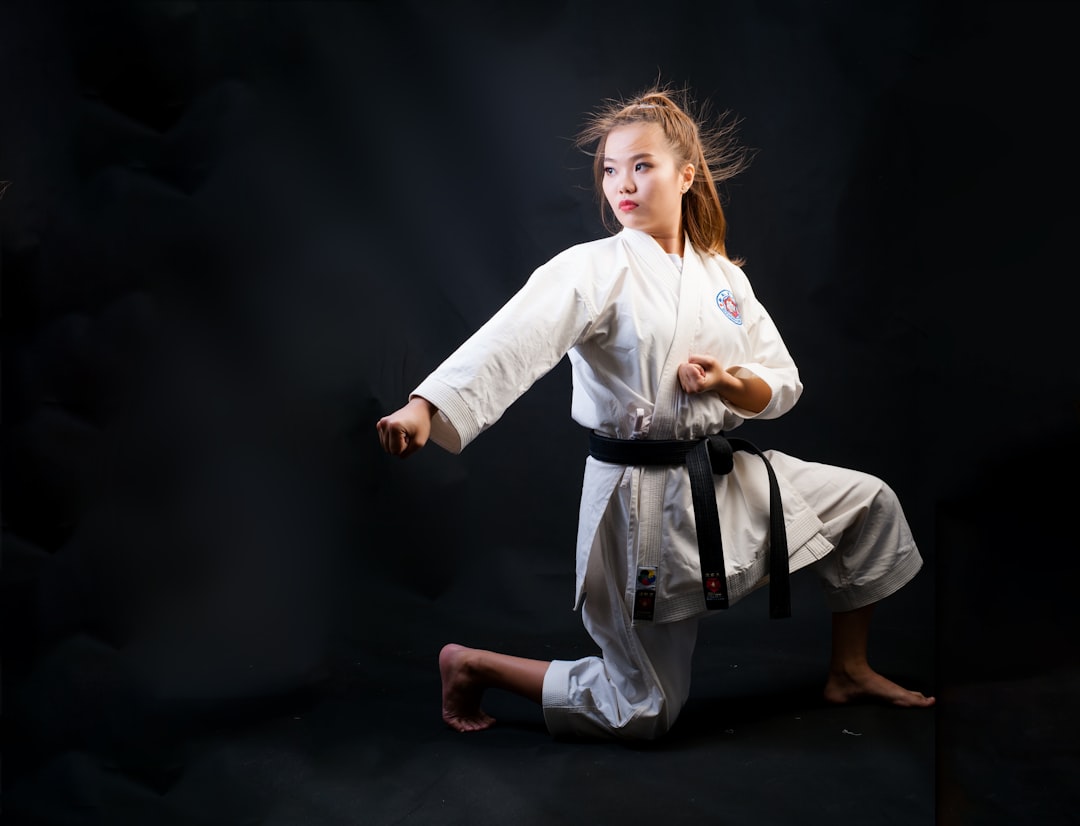
When training karate at home, selecting the right gi is crucial for both beginners and experienced practitioners alike. A high-quality gi made of lightweight cotton or hemp will offer comfort and durability during practice. The traditional karate gi, also known as a keikogi, typically comes in a plain weave and features a belt, or obi, which should be white for most styles. When choosing a gi for home practice, consider the weight of the fabric; a thinner material is often preferable as it allows for easier movement and better grip during techniques. Additionally, ensure that the size is appropriate; it should fit snugly but not so tightly that it hinders your range of motion. For beginners, starting with a white gi is standard, as it aligns with karate tradition and is versatile for various training conditions. Experienced practitioners might opt for a differently colored gi for personal preference or to signify a higher belt rank, but the principles of fit and fabric remain the same.
For those who train karate home regularly, maintaining a consistent uniform not only upholds the discipline of the practice but also ensures that you are prepared for any level of intensity in your training sessions. A well-fitted gi will also help instructors provide accurate feedback during online classes or video tutorials. Remember, the ideal home karate gi should be comfortable, allow for full range of motion, and adhere to the traditional standards of the martial art, while still accommodating the needs of your personal training space. Does the fabric feel durable and breathable? Is the sizing accurate for your body type? By carefully considering these factors, both beginners and seasoned karateka can select a gi that supports their home practice effectively.
Proper Care and Maintenance of Your Karate Gi to Ensure Long-Term Durability
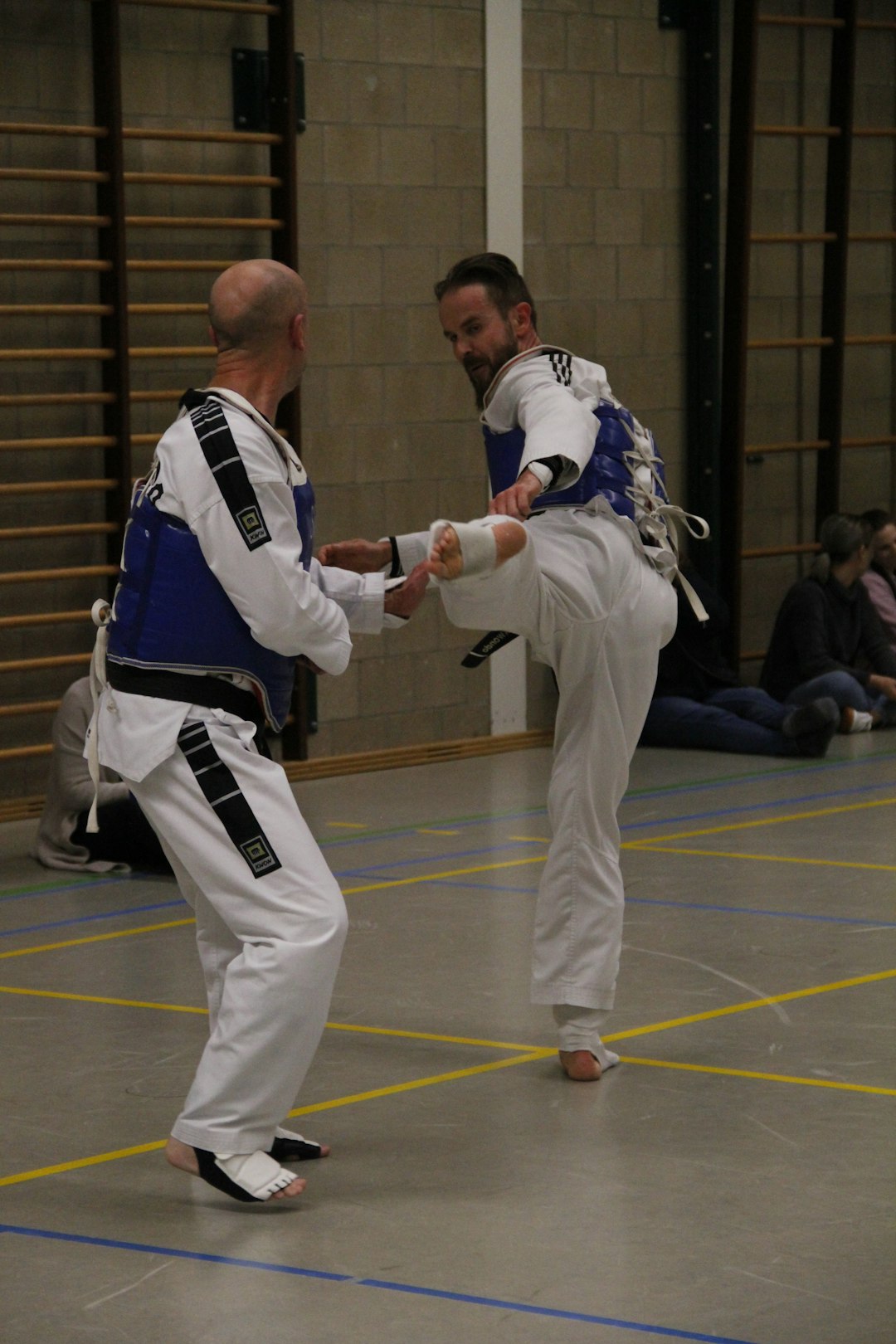
When it comes to maintaining the longevity and integrity of your karate uniform, also known as a gi, proper care is paramount. After each training session, whether you practice karate at home or in a dojo, it’s crucial to address any dirt or sweat on the garment promptly. Rinsing your gi in cold water immediately after use can prevent stains from setting and odors from embedding. However, avoid using hot water, as it can shrink the fabric and compromise the fit and design of the uniform.
To ensure your karate gi remains durable over time, machine washing is recommended when necessary. Use a gentle cycle with a mild detergent that’s free from bleach and fabric softeners, which can damage the cotton or hemp fabric commonly used in these uniforms. Always wash your gi separately to prevent colors from transferring and to maintain its crisp white or traditional color. Air drying is the best method to preserve the shape and prevent shrinkage; direct sunlight can weaken the fibers and cause fading. Remember, a well-maintained karate gi not only lasts longer but also looks its best, reflecting your dedication to the martial art you practice at home or in a group setting.
Customizing Your Karate Gi: Personalization Options for Train Karate Home Enthusiasts
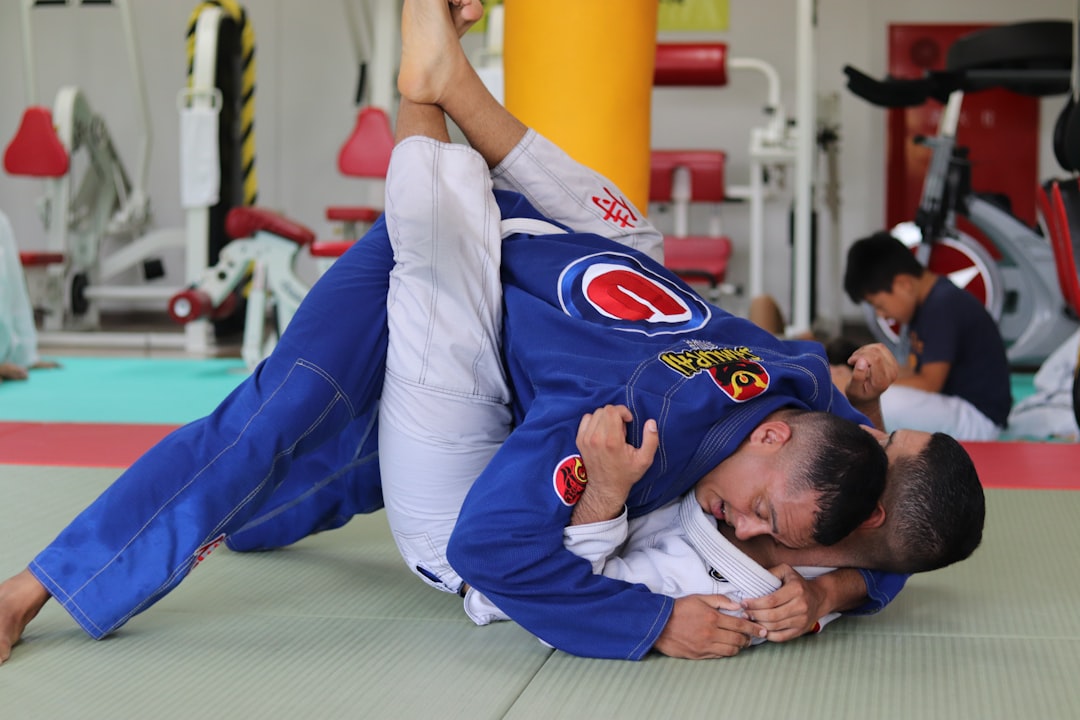
When training karate at home, donning the right attire can enhance your focus and performance. A karate uniform, commonly known as a gi, is not just a garment but a symbol of respect for the discipline. For the dedicated karateka training at home, personalizing your gi can be a way to express individuality while maintaining the tradition of martial arts. Are you a train karate home enthusiast looking to make your gi unique? There are several customization options available that cater to both aesthetic preferences and practical needs. From selecting the ideal cotton fabric that breathes well for comfort during rigorous routines, to choosing the perfect belt color that reflects your skill level, each decision can be tailored to align with your personal training goals. You might consider adding embroidery, a family crest, or even your own dojo’s insignia to the collar or sleeves for a touch of personal history. Furthermore, the options for trims and colors are vast, allowing you to create a gi that is as individual as your karate practice. Whether it’s a subtle change like switching from a traditional white to a striking black or a more elaborate design with custom patches, your home training uniform can truly be a reflection of yourself. Can you add your own flair to the traditional karate gi while still upholding the essence of martial arts training? Absolutely. With the right resources and a clear vision of what you want, you can design a gi that is both functional for train karate home sessions and a personal statement of your commitment to the art.
In conclusion, the karate uniform, commonly known as a gi, serves as more than mere attire; it is a symbol of respect and discipline integral to the martial art. Whether you are a beginner or an experienced practitioner training karate at home, selecting the right gi that fits well and suits your practice environment is crucial for both performance and comfort. Proper care and maintenance will ensure your gi remains in top condition, reflecting the dedication and honor it represents. For those looking to personalize their training gear, customization options are available to help you stand out while upholding the traditional values of karate. As you continue your journey in mastering this martial art at home, remember that your gi is not just a garment but a companion on your path to self-improvement and mastery.
